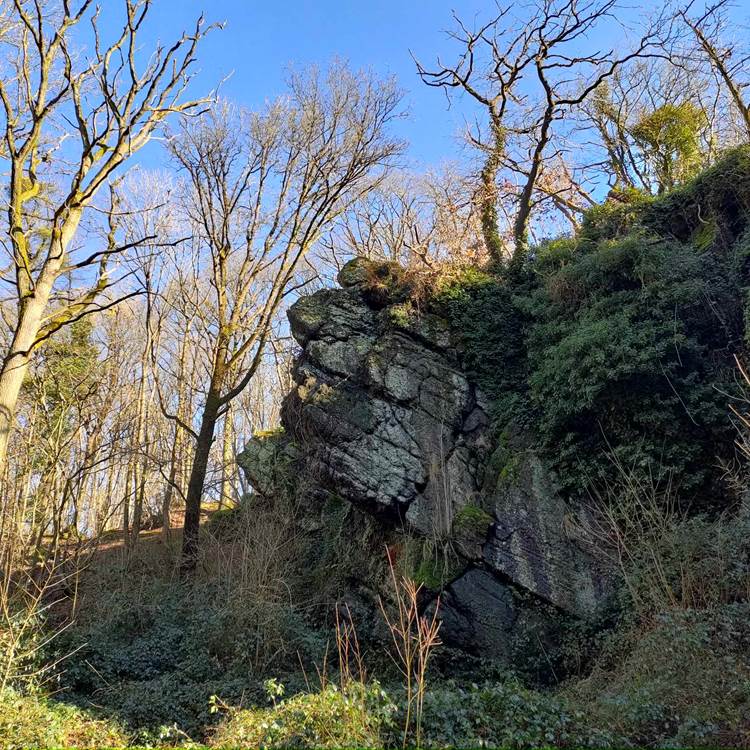Discover
The rock that flops... curious? Come and discover
This 370-million-year-old puddingstone (hard rock sediment) about 25 meters high bears a striking resemblance to a human profile and has always been the emblem of the Haut-Pays and tourism in the region. Why this strange name? According to G.-A. Hécart (Dictionary of Valenciennes dialect), a piece is "bique" when it exceeds the one on which it is placed and is as if balanced. Located in the heart of the Angre and Beaufort woods, the site always attracts many visitors.
The legend
Legend has it that at that time, Satan was prepared to do anything to oppose Saint Remacle's plan to build the Stavelot Abbey. The Devil therefore set off with a huge rock on his shoulder, with which he intended to destroy the troublesome building. His journey passes through the valley of the Grande Honnelle where he sees a poor wretch, with worn shoes, carrying a large and rather bulky bag. The Devil questions him about the distance he still has to travel to Stavelot. What he doesn't know is that the poor man is a messenger from Saint Remacle, or even Saint Remacle himself. The latter tells him he comes from Stavelot and describes a journey so long that he has worn out countless shoes, boots, slippers, and sandals, which he pours out of his bag. Satan, discouraged and disappointed, then decides to abandon the rock by the river. And since then, the Rock... has been lying in the High Country!
Exceptional flora and fauna
The image of the "Caillou-qui-Bique" is often associated with the daffodil that grows in its woods and attracts many walkers from the end of winter. Here are some tips for protecting this heritage: Limit your picking to what you can get your hands on and definitely do not take bulbs. In addition to a decree from the municipality of Honnelles (of February 26, 1981) regulating this picking, do not lose sight of the fact that, since September 12, 2008, a new forestry code has been in force and regulates movement in woods and forests (it modifies the old forestry code of 1854!!! And is therefore necessarily better adapted to current life in the forest). The forest also contains other riches such as Forster's woodrush (Luzula forsteri) which is found nowhere else in Belgium or the sweet spurge (Euphorbia dulcis), as well as many varieties of orchids (Orchis).
During your walk you will probably also have the opportunity to observe a whole series of birds, or even a hare or a roe deer, so rich and varied is the fauna of the Haut-Pays.




